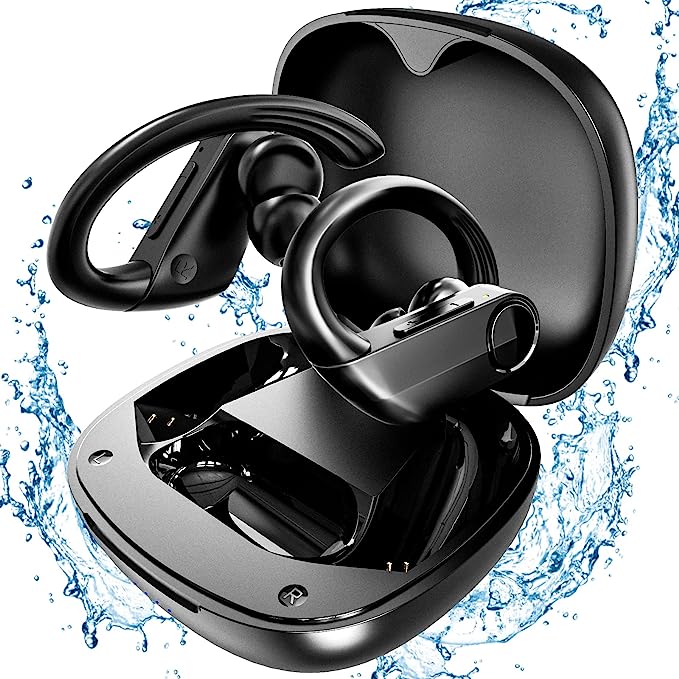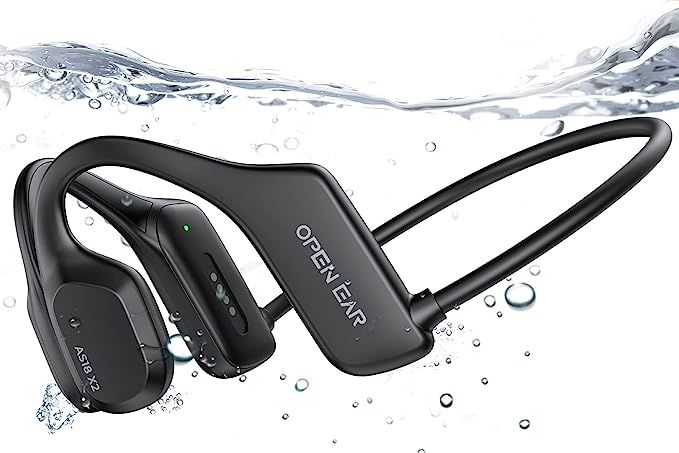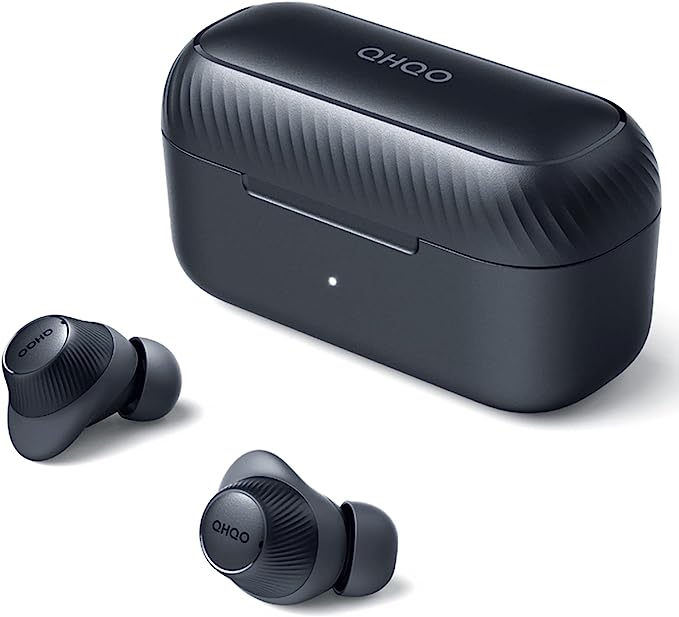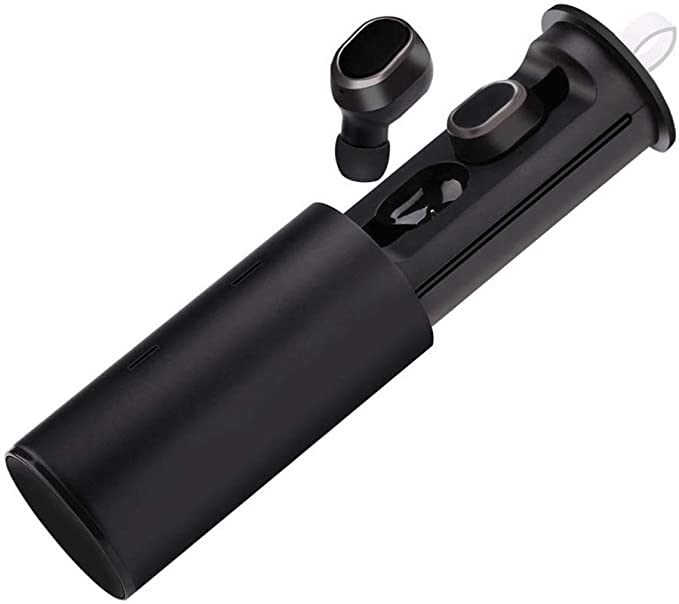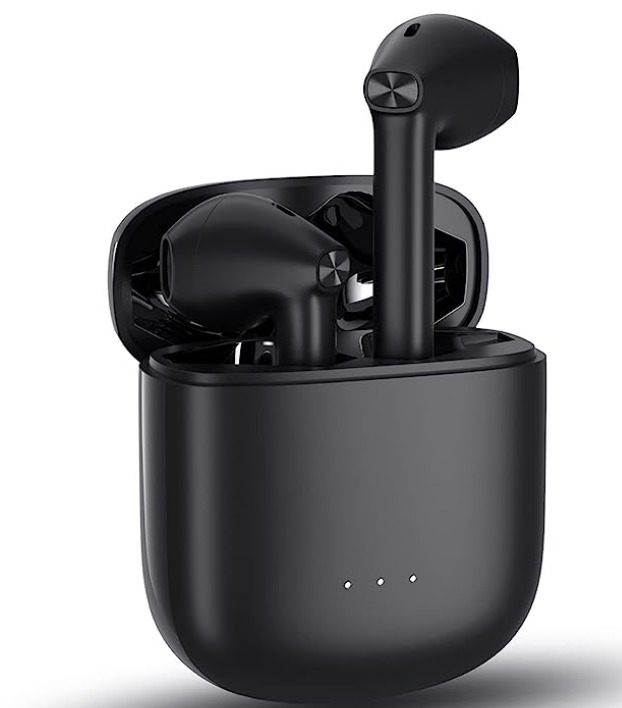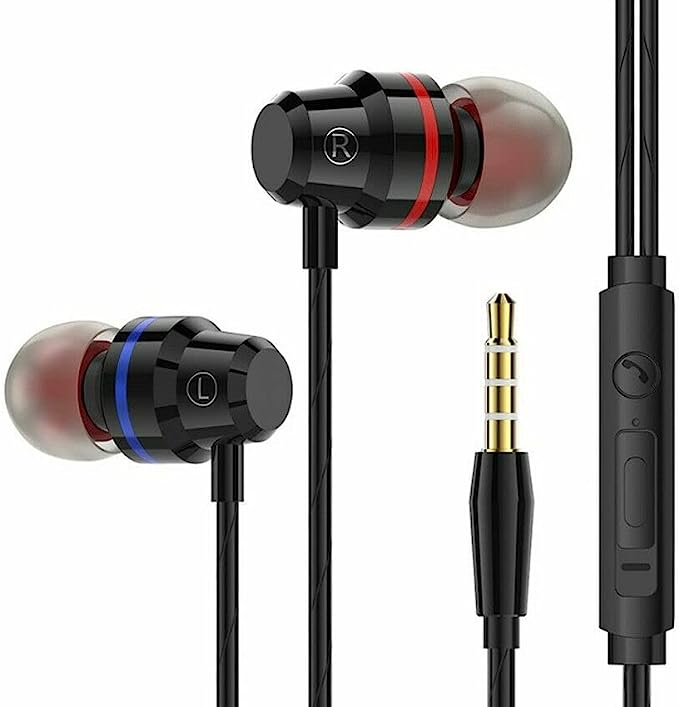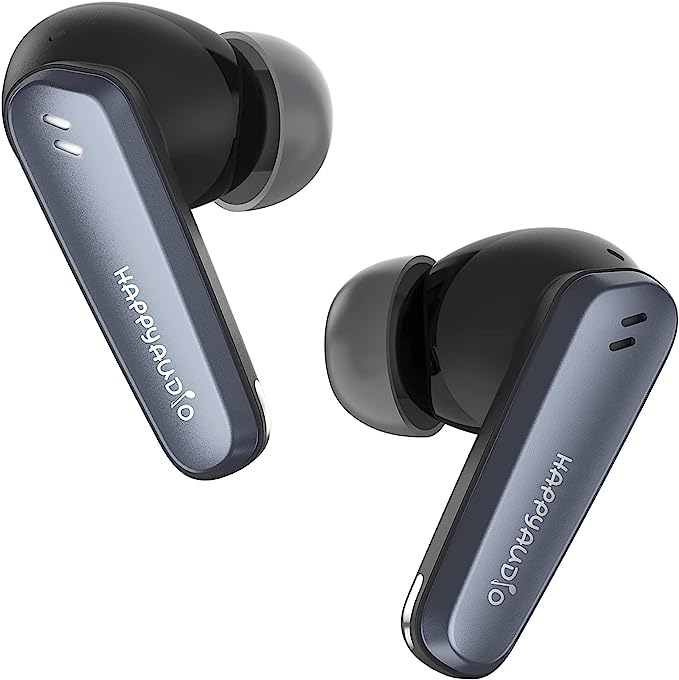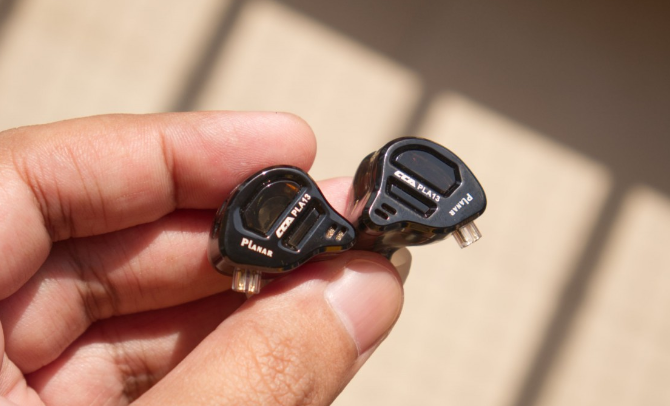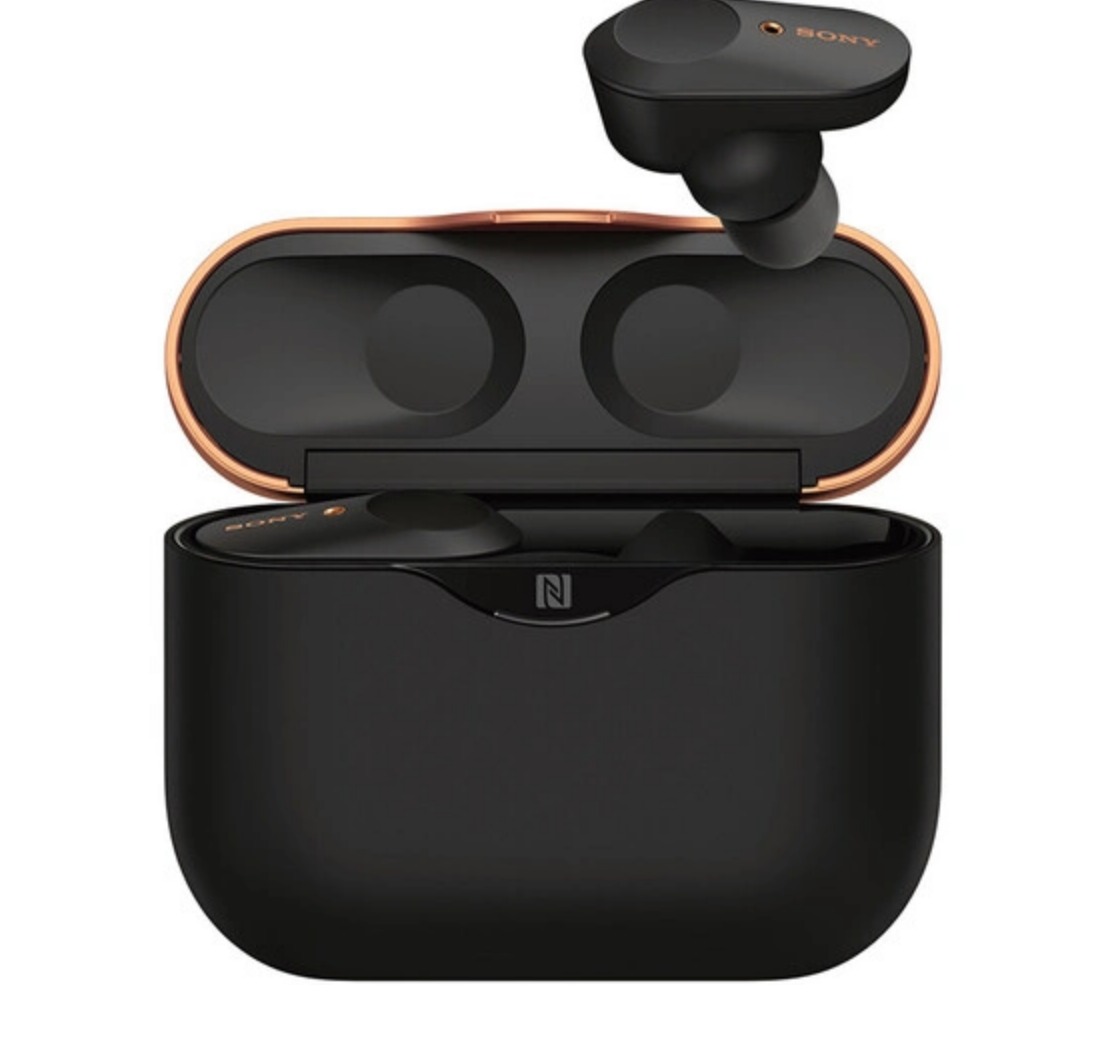Biomechanics of Stability: Why the Earhook is Essential for Sport Audio Endurance
Update on Nov. 14, 2025, 12:53 p.m.
The demands of high-intensity training—whether a sprinting interval, a rapid directional change, or a plyometric jump—place immense stress on audio equipment. For athletes, the most critical functional specification is not audio fidelity or active noise cancellation; it is unshakeable stability.
Pure in-ear True Wireless Stereo (TWS) earbuds often rely solely on the friction and pressure seal within the ear canal, an inherently fragile anchor against dynamic movement. This recurring failure has necessitated the evolution of the Earhook TWS form factor. This design class, exemplified by models like the GOLREX T59, represents a pragmatic application of biomechanics and engineering utility, solving the three core problems of sport audio: Stability, Stamina, and Survival.
The Engineering of Stability: Biomechanics of the Three-Point Anchor
The primary functional advantage of the earhook design is its use of the outer ear’s anatomy to establish a three-point anchor system, counteracting the forces exerted during exercise.
- Point 1: The In-Ear Tip: Provides the initial acoustic seal and minor friction.
- Point 2: The Concha/Antihelix: The body of the earbud rests against the bowl of the ear, providing vertical and inward pressure support.
- Point 3: The Auricle Anchor (The Hook): This is the functional key. The flexible earhook wraps over and around the auricle (the external, visible part of the ear).
During activity, your head experiences various kinetic forces: linear acceleration (forward/backward during running) and rotational force (side-to-side during turns or quick head checks). The over-ear hook directly counters the angular momentum that typically causes pure TWS buds to rotate, twist, and fall out. It distributes the mass of the earbud across the ear’s more robust cartilage structure, allowing the earbud to move with the head rather than being jostled loose by the impact. The ability of the T59’s hook to be “soft, flexible, and adjustable” is a vital ergonomic feature, ensuring the anchor point conforms to the wide variations in human ear shape without creating painful pressure points.
This focus on physical security is a direct response to the market’s need for uncompromising stability.
The Engineering of Endurance: Trading Aesthetics for Utility
The sheer physical size required for the robust earhook mechanism and the necessary internal structural support yields an accidental but profound engineering benefit: space.
This expanded volume solves the greatest anxiety in portable tech: battery life. TWS devices struggle to pack sufficient Lithium-ion (Li-ion) capacity into their minute chassis. The earhook form factor inherently offers a larger cavity, which is leveraged to house a bigger power cell and a larger charging case battery (such as the 650mAh case specified for the GOLREX T59).
This enables the claim of up to 36 hours of total playtime. This longevity shifts the user experience from managing battery life to simply enjoying the activity. It is the ability to complete a marathon training cycle or a full week of intense gym sessions without needing to constantly find a wall outlet.
Furthermore, the design often allows for the integration of multiple modern charging utilities: Qi wireless charging (operating via electromagnetic induction) and the universally fast USB Type-C wired connection. The inclusion of a Dual LED Digital Display is the user interface to this power management system, translating the internal state of charge (voltage and current tracking) into an easily digestible numerical display, eliminating the guesswork of generic LED dots.
The Science of Survival: Decoding the IPX7 Threshold
For a device marketed for “Running, Workout, and Sport,” the ability to withstand moisture is not a feature but a mandatory engineering requirement. The IPX7 Sweat-resistant rating provides an objective, international standard for this requirement.
The IP (Ingress Protection) standard is defined by the IEC 60529. The ‘7’ denotes resistance against the ingress of liquid, specifically: temporary immersion in up to 1 meter of fresh water for 30 minutes.
The engineering effort to achieve IPX7 in a complex electronic device is multilayered:
- Material Sealing: The casing uses precision-machined joints and specialized silicone gaskets/O-rings at every seam and control point.
- Acoustic Membrane: The driver and microphone ports must be covered by membranes that are permeable to air/sound waves but impermeable to liquid water due to surface tension.
- Corrosion Mitigation: Critically, the IPX7 barrier protects the internal electronics and battery contacts from sweat. Sweat is saline (salty) and highly corrosive to printed circuit boards (PCBs) and metallic components. The IPX7 seal ensures the long-term operational health of the device despite repeated exposure to this corrosive environment.
This rating assures the user that the device is robust enough for any high-intensity, sweat-drenched activity.
Sonic Performance in Motion: The 11mm Driver and DSP
The acoustic needs of an athlete are distinct. Motivation during exercise often relies on a powerful, driving rhythm, which translates acoustically to strong, rich bass. This is where the choice of a large 11mm dynamic driver becomes functionally significant.
As an acoustic principle, a larger driver diaphragm can displace more air and typically do so more efficiently than a smaller one, particularly at low frequencies. This engineering decision supports the stated goal of reproducing a “rich bass range,” providing the low-end energy necessary to fuel high-impact movement.
Complementing the hardware is the internal processing. The concept of “volume-optimized active EQ” is an advanced feature relying on the earbud’s internal Digital Signal Processor (DSP). Based on the psychoacoustic principle that human hearing sensitivity to bass and treble changes dramatically with volume (Fletcher-Munson curves), this DSP dynamically adjusts the frequency response. The goal is to maintain a perceived “clear and balanced” sound signature, ensuring the low-end punch remains present and motivating without becoming distorted, regardless of whether the user is listening at a moderate volume during a light stretch or at peak volume during a final sprint.
The Trade-off of Utility: Size, Comfort, and Control
While the earhook form factor solves stability and stamina, it presents a functional trade-off inherent in all utility-driven designs.
The necessary volume required for the large driver and battery, and the wide profile of the earhook, means this form factor is less universally comfortable than minimal TWS designs. For instance, some users note the product can “feel too big even with the smallest earpiece.” This is a key engineering consequence: the structural integrity and stability required for sport mandate a larger volume, which can compromise fit for users with smaller ear anatomies.
For interaction, the T59 utilizes One Button Control and supports Mono & Binaural Modes. Physical buttons, as opposed to touch sensors, provide tactile feedback—a crucial ergonomic advantage during a sweaty workout where finger moisture can cause touch sensors to misfire. The mono capability (using either earbud independently) is a functional benefit for athletes and outdoor users who need situational awareness (keeping one ear open to traffic or gym surroundings) while maximizing overall playtime.
Conclusion: Functionality Over Form
The earhook TWS category, with the GOLREX T59 serving as a potent example, is a testament to the idea that for specialized use cases, functionality must dictate form. This design class rejects the ultra-minimalist aesthetic of pure TWS to provide the superior mechanical anchor, energy capacity, and durability required by the active consumer.
By leveraging the biological structure of the ear for stability, providing power management for long-duration activities (up to 36hrs Playtime), and employing rigorous moisture sealing (IPX7), these headphones are engineered to remove friction from the high-impact experience. For the athlete, the choice is clear: prioritize the aesthetic of the smallest possible device, or embrace the practical engineering of a secure, long-lasting audio tool that simply will not fail under dynamic stress.



